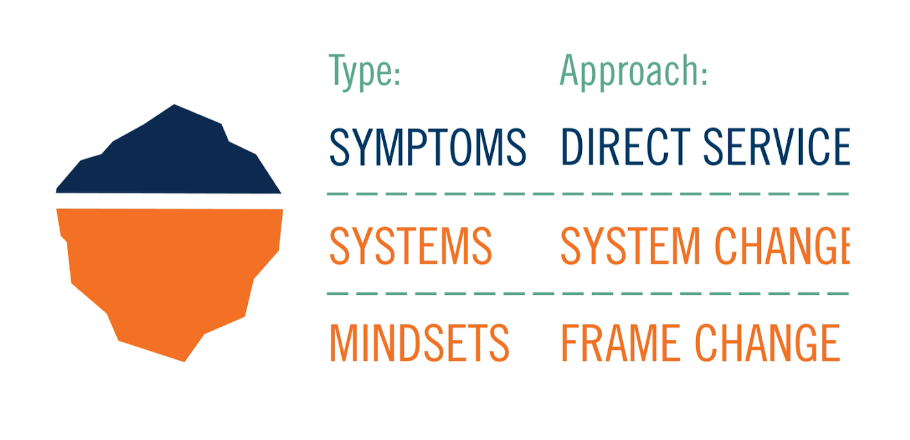System Change: Why We Should Manage the Missing Middle

The fieldwork in women’s empowerment has shown us that the root causes are complex, and intertwined and embrace cultural and educational elements of society.
Let’s examine this complex web of relationships with respect to the goal to increase the number of women and girls in science and STEM fields.
Before we deep dive into this example, let me introduce the system change framework- adapted from the “ The 5R Framework by the USAID” [1] by Ashoka[1] , a platform that builds and cultivates a community of change leaders- mostly social entrepreneurs. Ashoka encourages social entrepreneurs tackling social challenges to change systems or mindsets to scale impact.

As Figure 1 shows, a system change targets a change in the root causes of an issue, as opposed to a surface-level change which only addresses symptoms. When we address symptoms, we add positive outcomes to existing dynamics. Instead, system change requires a break away from the linear relationship and instead employs strategies based on scaling indirect impact and changing existing dynamics.
Going back to our example, a direct service would be giving girls aspiring to study in STEM fields scholarships. No root cause is addressed, and more positive outcomes are encouraged- more women in STEM fields.
Let’s look at the systems that interact and drive as the root causes of why we do not have an equal number of men and women in STEM. The root causes outlined below are not an exhaustive list. We will call each distinct root cause- a system. Most of our examples will be from Turkey where we do fieldwork:
- Cultural system: The norms and values imposed by society that defines a fulfilled and happy woman. In Turkey, a woman’s status in society is mostly defined by her being a great mom and cook.
- Media systems: There is a lack of awareness about the fact that we have fewer women in STEM fields; women get paid less than men (in different countries and fields different rates apply); very few companies provide equal opportunities at the workplace.
- Education systems: In Turkey, parents are heavily involved in the university major selection of their children; We have a national exam where a teenager picks his/her field of study, gets a score, and is placed based on his/her score and choices. As a result, 70% of university graduates do not work in their field of study.
- Mobility systems: Women are less mobile with their education and workplace options. If single, most families do not want their unwed daughters to work and stay in a different city on their own.
- University career development systems: Career counseling is not gender-sensitive and one size does not fit all.
- Systems of career orientation- formal or informal: Lack of role models and informal networking opportunities.
- Human resources placement systems: Lack of part-time or flexible jobs; gender biases re: sectoral or functional placements.
- Childcare system: There is a big motherhood premium in Turkish society; Every woman aspires to be a mother; The government child-care support incentives are not sufficient.
- Parent education systems: Men do not
- Local job markets system: Even if a woman graduates from a top science field from a top university, most of the time, she is expected to go back to her hometown, stay with family and find a job. However, a smaller town may not have fulfilling or inspiring job opportunities. Even if they exist, they are hard to find.
Systems are always in flux and interact with each other. Each system has resources, rules, and outcomes. Typically, every NGO, public institution, or social entrepreneur works with one system and one system only. There is a lack of coordination among our systems to scale the impact. We can create system change by:
- unlocking new resources for the system to draw on
- introducing new elements to the system / or getting rid off
- changing the relationships between elements of the system
- improving flows of information between the actors in the system
- changing the rules that govern behavior in the system
- changing the mindsets of the actors in the system

